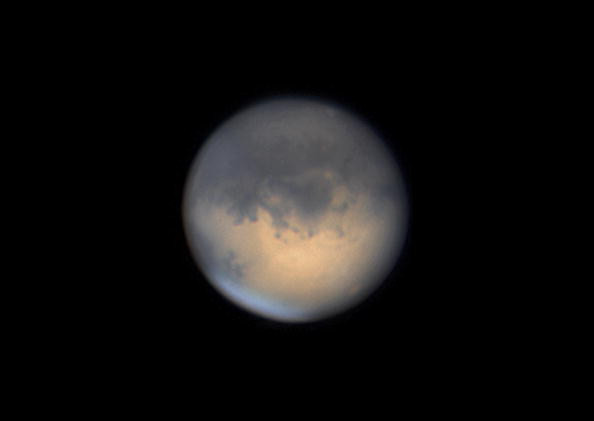ESA's Jan Woerner: If life existed below the surface of Mars we will find it

European Space Agency chief Jan Woerner believes life on Mars may have existed beneath the surface and that we may be able to find it in the next two years. In an interview with Horizon, the European Commission's research magazine, Woerner said the agency intends to drill into the surface of the red planet to look for signs of alien life.
ExoMars and proofs of life
In 2018, the ESA plans to launch its ExoMars mission. The goal is to search for biological proof of Martian life, past or present. The agency plans to send a solar-powered rover to the surface of Mars to take geological samples which it hopes will provide evidence that the planet may have supported living organisms.
"The definition of life is not that easy, but the real question on Mars is whether there is something that we understand as life, meaning organic material with cells," Woerner told the magazine. "And, in fact, there is some chance that in the past there was something similar to life on Mars. Not on the surface, we know that, but maybe below it ...
"The Mars mission, especially ExoMars 2018, intends to drill about two metres into the ground to find out whether there are some organic materials from the past, either still active or just existing because in the past the atmosphere of Mars was quite different from what we have now."
This drilling operation will be the first to go to such a depth under the surface of Mars. The mission will also aim to answer questions about the composition of the red planet's atmosphere and the geological processes that have shaped it over the years.
No human trip "within the next 30 years"
Woerner's comments come as Nasa astronaut Scott Kelly's landed back on Earth, on 2 March. Kelly and his fellow Russian cosmonaut Mikhail Kornienko spent 340 days on the International Space Station, as part of the Year in Space mission.
The goal was to examine how a prolonged stay in space affects the human body, to help Nasa prepare for future missions to Mars and for the long journeys involved. Nasa is hoping to launch a manned mission to Mars in the 2030s.
For his part, Woerner doesn't think men will set foot on Mars anytime soon. "I don't believe we will have a human mission to Mars within the next 30 years. Because Mars is so far away from the Earth, it's not comparable to a trip to the Moon," he said.
According to him, men will first have to overcome a series of practical, psychological and technological challenges. A trip may last two years, and in this length of time, the body may suffer from being in space. An astronaut who falls ill will not be able to go back to Earth to receive treatment.
The ESA chief also believes the fact astronauts on Mars would not have a clear view of their home planet might cause serious psychological distress. But the most serious problem so far is that no rocket is powerful enough yet to leave Mars once it has landed, because gravity is only 40% of what it is on Earth (compared to 16% on the Moon).
"If you look up to the sky right now and you see Mars as a small red dot, that's exactly what astronauts would see, just in a different colour if they look back from Mars to Earth. That is also a big thing from a psychological point of view," he said.
"But I am sure humans will go to Mars. Humans went up Mount Everest, they go into the depths of the sea. Regardless of when and how they do it, humans will go to Mars, I am quite sure of that. And beyond, but it will take time."
So there might be life on Mars, but men will have to wait some more before they get to go on the planet to see it up close.
© Copyright IBTimes 2025. All rights reserved.






















